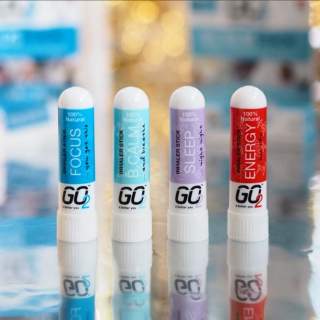Get enough sleep or face low energy and poor concentration – research
At least a third of adults are not getting enough sleep, impacting detrimentally on a range of health processes, including mood, energy and concentration, according to research.
One US survey, conducted by the Centers for Disease Control and Prevention (CDC), found that almost 35 percent of adults are getting less than seven hours of sleep a night, sometimes leading to bad moods, low energy, difficulty in concentrating and a general inability to function adequately.
The survey indicated that sleep deprivation may increase the risk of several chronic health conditions, while other research indicates that sleep-deprived people report an increase in negative moods and poor concentration, focus and alertness.
The US Sleep Foundation says improved sleep may boost both short- and long-term cognitive performance.
SA health expert, Giulia Criscuolo said the current pandemic had upset routines and sleep cycles and the lack of adequate rest was impacting on cognitive abilities and concentration. “Aim for at least eight hours of restorative sleep a night and take steps to improve sleep quality. Eat healthily, manage stress, exercise daily and try natural support aids for sleep, focus and energy, such as GO2, 100% natural essential oil inhalers which help stimulate the brain's limbic system which guides our emotional responses,” said Criscuolo.
Essential oils are compounds extracted from plants and used for centuries for their therapeutic properties such as supporting calm, sleep, energy and alertness. Inhaling the oils may support the body to respond accordingly, Criscuolo added.
Martin Persson, from GO2 distributors, Stributique, said: “GO2 Inhaler Sticks are a game changer for natural health in SA because they are safe, easy to use and contain high quality, pure essential oils, known for their therapeutic, cosmetic, aromatic and spiritual support”.
Available online at https://beautybuy.co.za/, www.retailbox.co.za and selected Dis-Chem stores.
Managing a Business is More Stressful than Raising Children
The World Health Organisation (WHO) identified workplace stress as the greatest health epidemic of the century. Stress can lead to depression and anxiety disorders, something a WHO-led study estimates costs the global economy US$ 1 trillion each year in lost productivity.
What’s more, entrepreneurs and more specifically, small business owners claimed last year, according to Bank of America, that “managing their business is more than four times more stressful than raising children.”
There’s no doubt that entrepreneurship is not for the faint-hearted and that they are more likely to be more stressed compared to the employee workforce, and that they are more likely to worry a lot more. But, stress can lead to depression and other mental health issues.
When people talk about the challenges of entrepreneurship, they seldom discuss the impact that running a business can have on mental wellbeing, and neglect can take its toll, warns Pieter Scholtz, Co-Master Franchisor in Southern Africa for ActionCOACH. A recent study approved by the UC Berkeley Institutional Review Board, revealed that entrepreneurs were more likely to experience depression, ADHD, addiction and bipolar.
“The reality is that many entrepreneurs have to invest more hours in their business than salaried workers. At the same time, they face a degree of uncertainty, fatigue and isolation that’s unknown to employed people. This is especially true at the early stages of a startup, when they cannot be sure if all the hours, and capital, they’re investing in their venture will bear fruit. The constant pressure if often compounded by financial stress, which can lead to burnout, i.e., the owner loses sight of what life is truly about,” he says.
Exacerbating the situation further is the fact that the entrepreneur seldom has a colleague with whom to discuss their anxieties. Moreover, social interchange of any sort – one of the most pleasant aspects of the workplace – is in short supply for the entrepreneur: that stereotype of the ambitious business brain working alone from her dining room table is often all too true.
This isolation can contribute to the depression that arises out of anxiety – plus, there’s the ever-looming spectre of burnout. After all, it’s rare that entrepreneurs have the resources to support a workforce – which means that they carry the brunt of marketing and finance activities, in addition to their core business duties.
“All of this creates a scenario where the entrepreneur’s sense of identity and purpose is strongly bound to the success of the company. While this is understandable, it can have a negative impact on the individual’s self-esteem if the business goes through a rough patch or even fails,” Scholtz points out.
He adds that this is where the tools provided by a business coach can prove extremely useful. “It’s not that the business coach fulfils the role of a therapist – although, inevitably, entrepreneurs experience relief from discussing their concerns with an objective party. Rather, it’s about creating balance for the business owner and equipping them with the skills they need to work through particularly challenging times. The start of a coaching programme is what we call the alignment, where we identify exactly what the business owner wants out of life and then we compare that to where the business is and prioritise the business from there.”
Scholtz refers specifically to the stress experienced by entrepreneurs: as seasoned business owners themselves, business coaches are able to identify with this emotion. They are able to share their own ideas and tips for dealing with stress but, more than this, they are also able to provide practical solutions. For example, the business coach may be able to suggest a resource that can offer the assistance needed to bypass an obstacle; or perhaps they can recommend an alternative approach to tackling the problem that the entrepreneur has not considered because they are too immersed in the situation.
Business coaches can also lessen the isolation experienced by entrepreneurs by tapping into their own extensive networks to find potential contacts who may be a good fit for the startup owner. They will also be able to suggest appropriate conferences and industry events where the entrepreneur can broaden their knowledge while meeting industry peers who may help further the business.
“Ultimately, our role is to ensure the health of an enterprise – and the mental strength and wellbeing of the business owner plays no small role in this. By working together with a business coach, the entrepreneur may build the mental resources needed to tackle the business world,” Scholtz concludes.
Meet the samurais’ secret stressbuster... Ikebana, the Japanese art of flower arranging By Ambassador Shigeyuki Hiroki – Embassy of Japan SA
Hollywood films and Western historical novels tend to depict only the warlike confrontations that marked the centuries when the samurai flourished – but at the heart of this time of social and political upheaval, there resonate a practice and a message that could enhance our stress-driven lives in the 21st century.
This is the ancient Japanese art of ikebana, a minimal and meditative form of flower arranging developed in Japan but today practised by enthusiasts across the world. Recently, Australian Vogue even pinpointed ikebana as the hot new trend for wedding flowers and bouquets, noting: “The world of florals is taking a breather . . . think simplicity, elegance, understatement.
The perfect antidote to fussy arrangements for the laid-back bride.”That might sound rather remote from the samurai, the elite warriors of pre-modern Japan who, by the early 17th century after Japan reunited, had transformed into its highest social class. As the Japanese economy developed and flourished, so did culture.
Theatre forms such as kabuki became very popular and ikebana spread out of the Buddhist monasteries and aristocracy to be taken up as a fashionable and fulfilling leisure art. It was practised by samurai, wealthy merchants and others, both men and women.Like us, they sought out a still, quiet centre in life.
They found it in creating and contemplating ikebana. This was an extension of the Buddhist custom of making floral offerings, kuge. The creativity and focus needed for ikebana is seen as a form of meditation, just as the Japanese martial arts emerge from a core of mental focus.
Ikebana arrangements are appreciated for their intrinsic beauty and the artistry of their design rather than being competitive. In that, it could be likened to the contemporary trend for colouring-in that has swept the world, giving access to the joy of colour, shape and texture while drawing the mind and the creative spirit into the “zone”.
In ikebana’s use of natural materials and allusions to natural shapes and settings, it aims to focus the mind on the passage of the seasons, time and change. Similar yearnings in our busy, urban lives today prompted Pantone to name “Greenery” its 2017 colour of the year. Greenery can help make our urban interiors and natural exteriors one again, balancing spirituality, banishing anxiety and so making us more effective.
This embracing attitude to plants was captured in ikebana, which uses freshly cut branches, vines, leaves, grasses, berries and fruit as well as flowers. In fact, it showcases plants at every stage, from seeds to wilted and dried plants. These are complemented by glass, metal or plastic containers – their size, shape, texture, volume and colour are also key decisions for the ikebana practitioner.
Ikebana then was part status symbol, part a symbolic language of flowers. Understanding the symbolism is like a code to appreciating the layers of spiritual and aesthetic meaning in ikebana. Even the placement of ikebana in a room or the occasion it marks are important factors reflected in homes throughout Japan.
In early March each year, for example, the Doll Festival, or Girls’ Festival, means that flowering peach branches are decorated with traditional dolls. Boys have their turn in May when Japanese irises are used to symbolise male strength.Bamboo features in decorations for the Star Festival in July, while September’s autumn moon is welcomed with ikebana displays of seasonal Japanese pampas grass.
Good wishes for the New Year are conveyed by using plants such as evergreen pine, symbolising eternity, and flowering apricot branches for venerable old age.Over the centuries since it was first developed, ikebana has developed several approaches or schools. There are three main ones today: ikenobo, ohara and sogetsu.The largest and oldest is ikenobo, based on the rikka (standing) techniques used by Buddhist monks in the 17th century.
This traditionally used tall bronze vases, with a carefully selected branch arching centrally through the arrangement and symbolising heaven or truth. Other branches were arranged around this for both decorative and symbolic purposes. Alongside this, the contrasting nageire developed, a very different style that evoked spontaneity in its name – meaning to “throw in” – but in fact used just one or two flowers or branches very subtly and simply to depict natural beauty.
Instead of tall vases, ohara, founded in the late 19th century, uses wide, shallow containers to allow the flowers to appear artfully strewn in moribana – literally “piled up”. The surface of the water itself becomes part of the landscape evoked by the arrangement. Sogetsu, founded in the 1920s, made this naturalistic approach more freeform and creative and newer schools have added more avant garde and abstract approaches.
Each of the three main schools has more than a million practising members in Japan alone, the most devoted striving to reach the rank of master. As ikebana now transcends cultural boundaries, Ikebana International was founded in Tokyo six decades ago. Today the ikebana motto is “Friendship through Flowers” as it has become a global decorative art with a heritage of half a millennium of practice. Ikebana followers in South Africa benefit from workshops by visiting Japanese masters, including special presentations arranged by the Embassy of Japan in Pretoria. These usually occur once a year.
To join the mailing list, contact: Cultural Division of the Embassy of Japan on This email address is being protected from spambots. You need JavaScript enabled to view it.
Mother Cupper Leaves Her Mark On SA Massage Therapists
A small group of excited Cape Town based massage therapists recently attended a 2 day intensive Dynamic Cupping Therapy Massage Workshop held at the Sport Science Institute in Newlands. The workshop was conducted by USA Massage Hall of Fame inductee, Anita Shannon, often, endearingly referred to as the"MotherCupper" by thousands of students whom have had the privilege to work with and study her contemporary methods of a nearly 3000 year old alternative medicine tradition, cupping therapy, still prolific throughout the Middle East and Asia.
Anita Shannon is the recently appointed Director of Advanced Education and Training for MIRA Dynamics International, Director of Advanced Continuing Education (ACE), an NCBTMB Continuing Education provider established in 2001, she has presented countless workshops on ACE Massage Cupping™ and MediCupping™ at international locations since developing these brands of bodywork in 2002. Anita has published six articles on this subject in Massage Today, Massage Magazine and Les Nouvelles Esthetiques, along with publishing five educational videos, and is currently writing a book on VacuTherapies™.
With her vast knowledge and experience and her first visit to South Africa, Anita added much needed professional perspectives and years of accumulated wisdom to professionals in the sport, physio, massage therapy, alternative medicine, Chinese medicine and natural beauty industries. Anita said, "I am duly impressed by the professional caliber of the South Africans who attended and look forward to returning later this year. I understand that cupping therapy is relatively new here and I love teaching this wonderful, and quite frankly, necessary healing massage technique that would compliment any therapists practice."
"Dynamic Cupping Therapy is a holistic healing method based on Traditional Chinese Medicine, developed and researched by Anita along with MIRA Dynamics International and offers a natural alternative for relief, cure and solution to every day health and beauty problems." said Derrick Z. Venter, CEO of MIRA. "Essentially, I am hoping to see this exciting practice instituted by practitioners in the sport therapy, massage therapy, physio and health and beauty industries in SA.
"MDI is continuously developing, researching and disseminating best practices, new discoveries and educational materials and we are keen to collaborate with professionals and doctors respectively, we aim to have Dynamic Cupping Therapy accepted as an accredited educational program here in South Africa." Mr. Venter added.
"We would love to have a South African based Educator/Trainer on the MIRA team. He or she would receive extensive training from Anita and we invite interested and qualified people to contact us via our website or Facebook page". said Derrick Z. Venter.
MIRA SA is the distributor of MIRA Dynamics Professional Cupping Therapy Tools and complimentary products in South Africa and welcome inquiries from interested retail and wholesale partners.
NOTES FOR EDITOR
Anita is available for telephonic interviews and appearances.
Derrick is available for interviews and appearances.
Both can be contacted via email at This email address is being protected from spambots. You need JavaScript enabled to view it. or 021 433 1759




